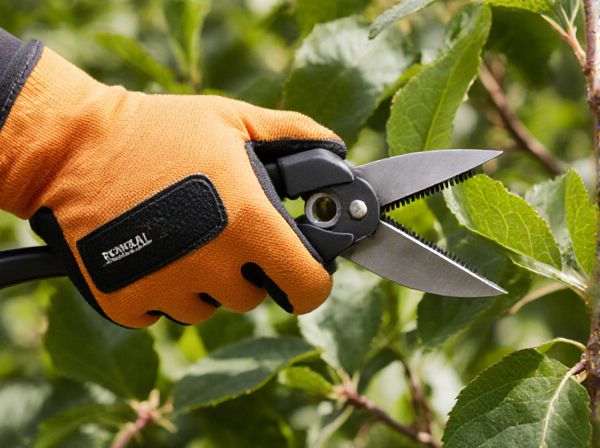
Renewal Pruning vs Rejuvenation Pruning Illustration
Renewal pruning targets the selective removal of older branches to stimulate new growth and maintain the plant's shape and productivity. Rejuvenation pruning involves cutting back the entire plant severely to encourage vigorous regrowth from the base, often used for overgrown or neglected shrubs. Both techniques enhance plant health but differ in intensity and purpose, with renewal pruning promoting gradual improvement and rejuvenation pruning triggering a complete renewal cycle.
Table of Comparison
| Aspect | Renewal Pruning | Rejuvenation Pruning |
|---|---|---|
| Definition | Selective removal of old or dead branches to stimulate new growth | Cutting back mature plants to promote vigorous, youthful growth |
| Purpose | Improve plant health and extend lifespan by renewing structure | Revive aging plants by encouraging fresh shoots and productivity |
| Timing | Typically late winter or early spring before growth starts | Late winter, early spring, or after flowering depending on species |
| Technique | Remove old, dead, or weak branches close to the base | Cut back main stems or branches significantly to stimulate growth |
| Result | Improved air circulation and stronger framework | Enhanced growth rate and increased flowering or fruiting |
| Best For | Deciduous trees, shrubs needing structural renewal | Woody shrubs and trees showing decline or reduced vigor |
Understanding Renewal Pruning: Purpose and Methods
Renewal pruning targets the selective removal of old, unproductive branches to stimulate new growth and improve the overall health and structure of the plant. Methods include thinning out dead wood, cutting back overly dense areas, and removing crossing branches to enhance light penetration and air circulation. This practice promotes vigorous shoots, increasing fruit yield and extending the plant's productive lifespan.
What Is Rejuvenation Pruning? Key Principles
Rejuvenation pruning involves selectively cutting back older plant material to stimulate vigorous new growth and restore plant health. Key principles include removing outdated, woody stems while preserving the structure to encourage the development of fresh shoots. This method enhances productivity and extends the lifespan of shrubs and fruit-bearing plants by maintaining a balanced growth cycle.
Renewal vs Rejuvenation Pruning: Core Differences
Renewal pruning involves selectively removing older, less productive branches to stimulate new growth and maintain the structural health of the plant, while rejuvenation pruning is a more aggressive technique aimed at dramatically cutting back the plant to restore vigor in overgrown or neglected specimens. Renewal pruning targets incremental growth improvement and sustained productivity over time, whereas rejuvenation pruning focuses on drastic restoration and revitalization within one or two growth cycles. Understanding these core differences helps ensure the choice of pruning method aligns with the plant's condition and desired growth outcomes.
Best Time for Renewal and Rejuvenation Pruning
The best time for renewal pruning is during the late winter to early spring when plants are still dormant, allowing for vigorous new growth with minimal stress. Rejuvenation pruning is most effective in early spring before active growth begins, ensuring the removal of old, unproductive wood stimulates healthy shoots. Timing these pruning methods correctly enhances plant health and maximizes flowering or fruit production in the growing season.
Identifying Plants That Benefit from Each Pruning Type
Renewal pruning targets older, woody shrubs like lilacs and old roses, removing mature stems to encourage vigorous new growth. Rejuvenation pruning suits multi-stemmed perennials and deciduous shrubs such as forsythia and spirea, cutting back nearly to the ground to restore plant health and vitality. Identifying these plants helps determine which pruning method maximizes flowering and structural improvement.
Step-by-Step Guide to Renewal Pruning
Renewal pruning involves systematically removing old, unproductive branches to stimulate new growth and extend the life of plants such as shrubs and fruit trees. The step-by-step guide includes assessing the plant's structure, selecting older branches for removal, cutting them back to healthy wood, and gradually encouraging renewal shoots over multiple seasons. Proper timing during dormant periods and maintaining plant health through regular watering and fertilization are critical for effective renewal pruning success.
How to Perform Rejuvenation Pruning Effectively
To perform rejuvenation pruning effectively, identify overgrown or unproductive branches and remove them strategically to stimulate new, vigorous growth. Focus on cutting back to healthy buds or lateral branches, ensuring cuts are made at a 45-degree angle to promote optimal healing and minimize disease risk. Regularly monitor the plant's response and adjust pruning intensity based on growth patterns to maintain long-term vitality and structural balance.
Common Mistakes in Renewal and Rejuvenation Pruning
Common mistakes in renewal pruning often include excessive removal of older wood, which can weaken plant structure and reduce flowering potential. Rejuvenation pruning errors typically involve cutting back too severely or at the wrong time, leading to stress or dieback rather than healthy regrowth. Both pruning types require careful assessment of plant species, growth stages, and correct pruning techniques to avoid damaging long-term vitality.
Benefits and Drawbacks of Each Pruning Technique
Renewal pruning promotes new growth by selectively removing older branches, enhancing tree health and structure while maintaining natural form, but it may temporarily reduce fruit production. Rejuvenation pruning involves cutting back most or all branches to stimulate vigorous new growth, effectively restoring severely overgrown plants, though it risks stressing the plant and requiring extended recovery time. Both techniques improve plant vitality, yet renewal pruning suits moderate maintenance, whereas rejuvenation pruning targets neglected or declining specimens.
Choosing the Right Pruning Method for Your Landscape
Selecting the appropriate pruning method depends on the age, health, and desired outcome for your plants. Renewal pruning targets older, overgrown shrubs by removing the oldest stems to encourage new growth, while rejuvenation pruning involves more drastic cutting back to ground level to restore severely neglected or woody plants. Assessing the plant's condition and growth goals ensures effective maintenance and landscape vitality.
Renewal Pruning vs Rejuvenation Pruning Infographic

 gardendif.com
gardendif.com